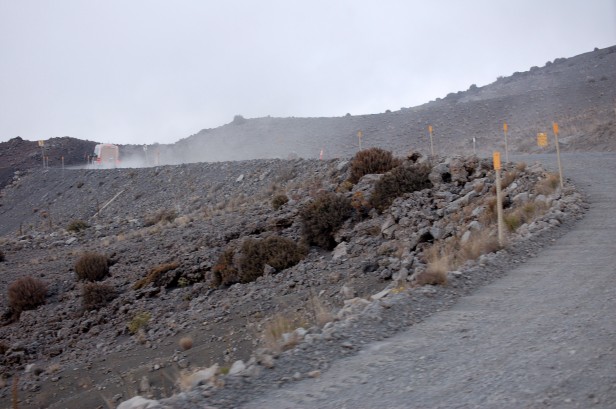Sorry Everest. You are not the world’s tallest mountain. That title belongs to Mauna Kea, a dormant volcano on the Big Island of Hawaii.
That’s right. While Everest’s summit is the world’s highest at 29,029 feet or more than 8800 meters above sea level, Mauna Kea is the world’s “tallest” mountain. When measured from its base on the ocean floor, Mauna Kea rises more than 10,000 meters or over 33,000 feet to its summit 13,802 feet above sea level!

Driving to the Top
The best part is that anyone can reach the top of Mauna Kea by taking an escorted tour or by driving their own vehicle to the summit. You can also take one of several hiking trails. A few years ago on a trip to the big Island, I rented a Jeep and drove to the top.
Note: The summit of Mauna Kea is a sacred site for some Hawaiians. There is an effort to bar visitors there and to even have the observatories removed. Some may not want to take the drive. Others may want to take the drive at their earliest opportunity before any restrictions are imposed.
In only two hours you can motor from a tropical paradise at sea level through numerous climate zones to arctic tundra at the summit. Vegetation gradually changes as temperatures decrease with altitude.

Deciduous forests covered the lower slopes until logging in the 1800s all but eliminated them.

The deciduous trees become conifers as the altitude increases.

The road is paved up to the Visitors Information Station (VIS) at around 9,000 feet. Whether driving or hiking to the top, stopping at the VIS for 30 minutes or so is recommended to adjust to the altitude. It is also recommended to refrain from visiting the summit until at least 24 hours after scuba diving.

Above the Visitors Information Station vegetation slowly disappears altogether.

Once the altitude is high enough to extinguish all vegetation, the scenery starts to look like a different planet.

If astronauts wanted a place to simulate a Martian environment, the summit of Mauna Kea looks like an excellent spot.


Summit Observatories
The summit of Mauna Kea is above the atmospheric inversion layer and has exceptionally stable air. Along with it’s remote location and dark skies, the summit is one of the best places on earth for astronomical observations. The US and several other countries have built some of the world’s finest optical, infra red, sub-millimeter, and radio observatories here.


The Keck observatories each have telescopes with 10-meter mirrors making them perhaps the most productive observatories on Earth. The Subaru observatory is Japan’s national observatory. It has a telescope with an eight-meter mirror.

The NASA Infrared observatory is another major observatory located here. It was built to support the Voyager missions and now conducts general research half of which is devoted to study of our solar system.



Further development of the summit for astronomical purposes has been put on hold while authorities deal with the objections of some in the native community who view the summit as sacred. I don’t believe many, if any, people still practice the ancient religion so halting development because of those old beliefs seems unreasonable to me.
Visiting the Summit
People come from all over the world to see the views from Mauna Kea. I think tour companies must provide coats for people to wear at the summit. Who would pack a winter parka for a trip to Hawaii?



It is cold at the summit even in the summer. In winter falling ice from the observatories poses a hazard.
I only brought a light jacket for my trip. It was warm enough when the sun was out.

There are no services or shelter at the summit. All of the observatories are closed to the public. In the event of an emergency there is a phone at the entrance to the University of Hawaii telescope. Cell phone coverage is problematic.
The Final Word
Driving or hiking to the top of the world’s tallest mountain is a must do when visiting the Big Island of Hawaii. The views will be spectacular all the way to the top, and it is free.

Nice trip to Hawaii..
LikeLiked by 1 person
Going from tropical at sea level to arctic at the summit was like traveling from the equator to the arctic circle in just a few hours.
LikeLiked by 1 person
Great
LikeLiked by 1 person
hello
LikeLike